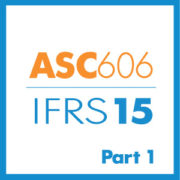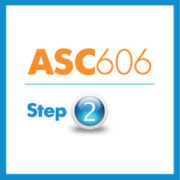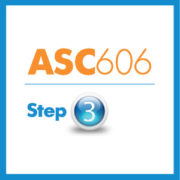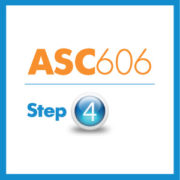A Brief Look into Revenue Recognition Standards Part 1
The biggest change to accounting since Sarbanes-Oxley, ASC 606/IFRS 15 is on the horizon, and unlike the current regulatory environment, this verbiage isn’t changing and the effective date isn’t getting moved back again. In this two-part series, we look to explore the basics of this highly complex shift, and offer recommendations on how you can begin.
Background: ASC 606/IFRS 15
The FASB and IASB issued their converged standard on revenue recognition in May 2014. The standard provides a comprehensive, industry-neutral revenue recognition model intended to increase financial statement comparability across companies and industries and significantly reduce the complexity inherent in today’s revenue recognition guidance.
A Delay in Adoption
The date was delayed one year to its current state: Annual reporting periods beginning after December 15, 2017 for public companies and annual reporting periods after December 15, 2018 for private companies.
Few Companies Have Made the Switch
Nonetheless, even with this delay in place and expected to be final, a recent study by the Connor Group found that 87% of public companies haven’t made the switch (based on SEC filings), and the numbers are likely even more dire for private companies.
What ASC 606 Changes
The biggest change that ASC 606 makes for businesses is that revenue will be recognized based on “performance obligations” similar to deliverables, with each performance obligation being accounted for as a standalone good or service as defined within a contract and recognized when the good or service is transferred to the customer.
Five Steps to Revenue Recognition
The standard introduces a five-step process to recognize revenue:
- Identify Contract(s) with a Customer
- Identify Performance Obligations in the Contract
- Determine the Transaction Price
- Allocate the Transaction Price to the Performance Obligations in a Contract
- Recognize the Revenue When (or as) the Entity Satisfies a Performance Obligation
We will discuss this further in part two, but for more information, see the overview from Deloitte.
Who ASC 606 Affects
ASC 606 Affects Many Industries
While we could make it easy as saying “ASC 606 affects all businesses who have contracts with customers,” because, in reality it does. However, to be more specific, the standard will have the most profound impact on the following industries: Aerospace, Communications, Defense, Engineering, Law, Media, Information Technology, Management Consulting, Marketing Services, and Pharmaceuticals, per Blue Hill Research.
ASC 606 Affects Many Departments
The standard also impacts more than just the accounting department:
- Information Technology will need to make a decision on new software to collect all of the data,
- Legal will have to make changes to all new and existing contracts
- Human Resources will need to hire and train or retrain everyone from accounting to sales on how this will impact them,
- Compensation employees will need to rethink bonus and commission structures based on revenue.
What Can You Do to Prepare?
It starts with having the right information. Stay tuned for part two of this series, which will share an in-depth exploration into some changes you will need to make. Until then, watch the following video from Intacct, learn more about contract and revenue management software, and be sure to download the following whitepapers, Six Rules for ASC 606 and Why Compliance Can’t Wait.











Leave a Reply
Want to join the discussion?Feel free to contribute!